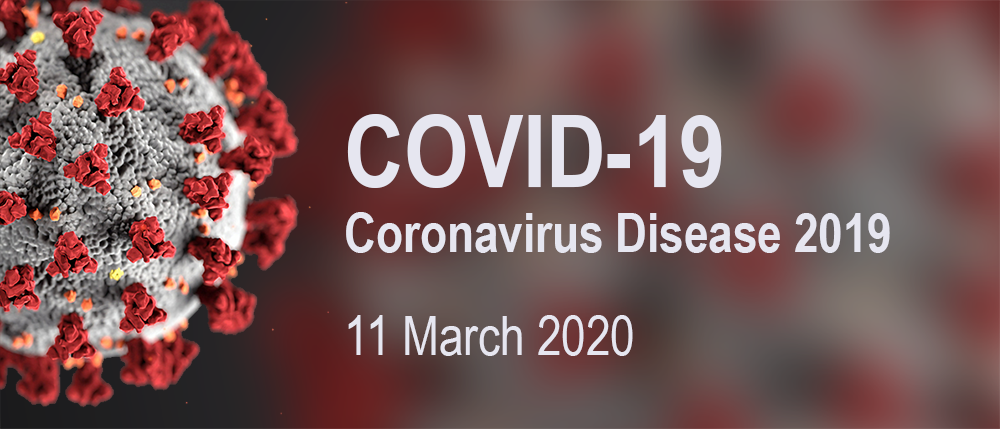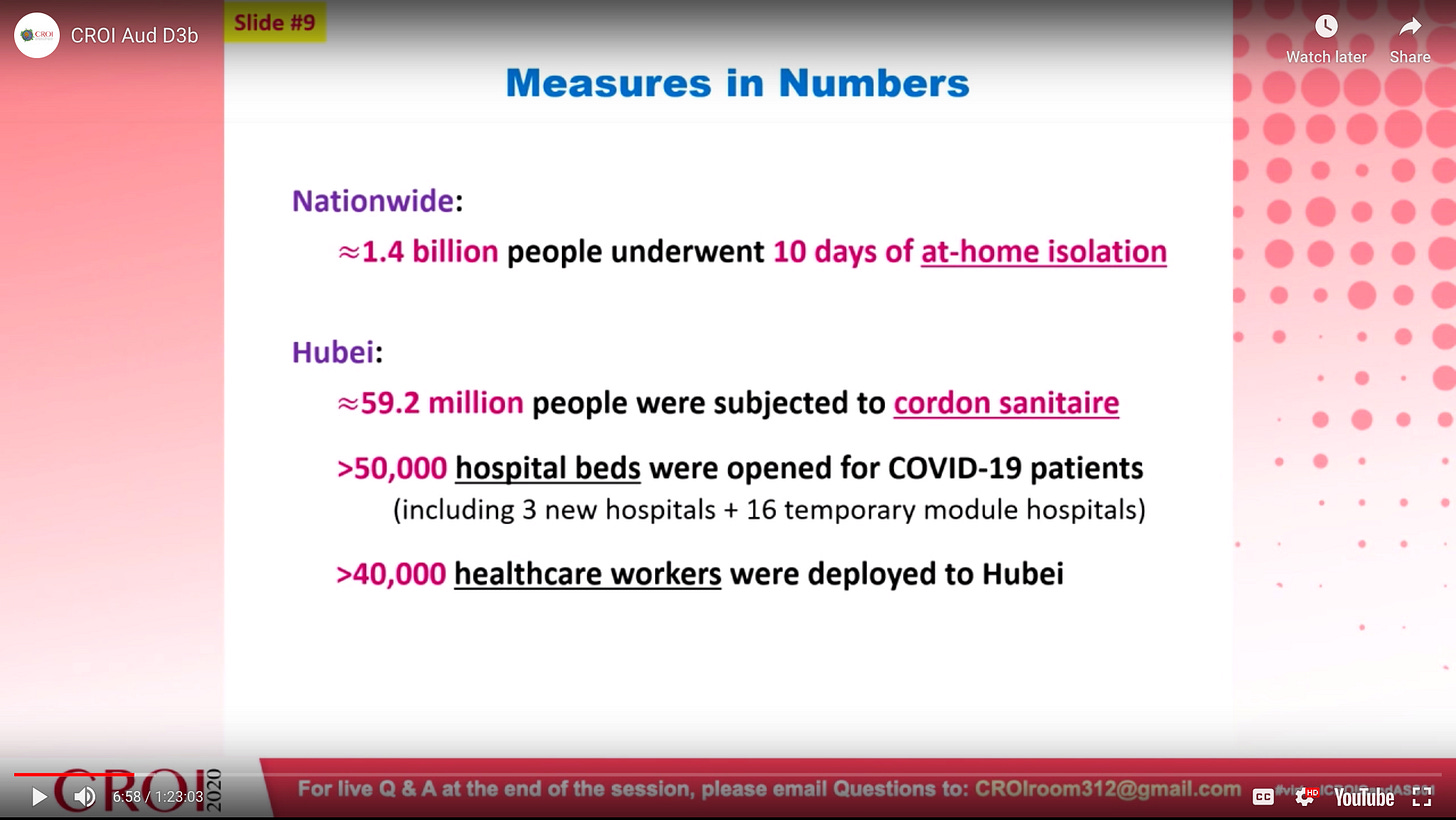11 March 2020
"Bottom line, it's going to get worse." COVID-19 is officially a pandemic; WA Governor bans gatherings of >250 in metro-Seattle, affecting ~4 million people.

"Bottom line, it's going to get worse," Anthony Fauci testified during a House Oversight Committee hearing. The director of National Institute of Allergy and Infectious Diseases “warned lawmakers that the novel virus was at least 10 times more lethal than the seasonal flu.”
“As a nation, we can’t be doing the kinds of things we were doing a few months ago,” he said. “It doesn’t matter if you’re in a state that has no cases or one case — you have to start taking seriously what you can do now, if and when the infections will come. And they will come. Sorry to say, sad to say, they will.”
"In the past two weeks, the number of cases of COVID-19 outside China has increased 13-fold, and the number of affected countries has tripled," World Health Organization (WHO) Director-General Tedros Adhanom Ghebreyesus reported Wednesday. "This is the first pandemic caused by coronavirus,” he said, and the first pandemic that WHO has declared since 2009. He also said that WHO is “deeply concerned, both by the alarming levels of spread and severity and by the alarming levels of inaction [emphasis added].”
Wednesday morning, Washington Governor Jay Inslee has issued a ban on public gatherings of more than 250 people for about 4 million people in three metro-Seattle counties: King (2.2 million), Pierce (877,000) and Snohomish (803,000). Washington has xxx identified cases of COVID-19 and xx deaths.
The Governor of Rhode Island followed suit at about 6 pm eastern, affecting 1.1 million citizen. There are only five identified cases in Rhode Island.
This might seem to be an extraordinary act in the United States, but China’s containment for COVID-19 was far more aggressive: 1.4 billion people spent 10 days in at-home isolation (slide from Conference on Retroviruses and Opportunistic Infections).

Former CDC director Tom Frieden — who oversaw the U.S. response to the 2009 H1N1 influenza pandemic, the 2014 Ebola epidemic and the 2016 Zika epidemic—told the Washington Post:
… in a worst-case scenario, but one that is not implausible, half the U.S. population would become infected and more than 1 million people would die… The deaths would not necessarily happen over a month or a year, but could occur over two or three years, he said.
Most public health advisories have focused on cough, fever and difficulty breathing. But preliminary research from Germany suggests that initial COVID-19 symptoms mimic the common cold, and that it is extremely viral.
COVID-19 can be spread before it causes symptoms, when it produces symptoms like those of the common cold, and as many as 12 days after recovery, according to a virologic analysis of nine infected patients…
The findings contrasted starkly with those from the 2003 outbreak of SARS in terms of viral load. "In SARS, it took 7 to 10 days after onset until peak RNA concentrations (of up to 5x105 copies per swab) were reached," the researchers wrote. "In the present study, peak concentrations were reached before day 5, and were more than 1,000 times higher."
Recommended reading
How coronavirus hijacks your cells, NY Times, 11 March 2020
Inside a Seattle-area hospital on the front lines of the nation’s first major coronavirus outbreak, Seattle Times, 10 March 2020
The great influenza The epic story of the deadliest plague in history, The Journal of Clinical Investigation, 15 July 2004
What Will You Do If You Start Coughing?, The Atlantic, 11 March 2020
Recommended viewing
The power of exponents (yes, math!)
Sections below
Around the country; Politics, economics and COVID-19; Global news; Case count (domestic and global); What you can do; and Resources
Around the country
Only six states have not yet identified a COVID-19 infection: Alaska (1/sq mile); Alabama (94.4 /sq mile ); Idaho ( 20/sq mile ); Maine (43.1/sq mile); Montana (7/sq mile); and West Virginia (77.1/sq mile). The 33 deaths are from four states, with most from Washington.
For context, the first death in the U.S. was announced on February 29.
Chicago has canceled Saturday’s St. Patrick’s Day parade.
How the Biogen leadership conference in Boston became the epicenter of that state’s outbreak.
Sacramento County, CA, shifts focus to mitigation versus containment. When the virus coronavirus is likely to already be in a community, “the focus needs to be on measures at the population level that slow the rate at which people get infected and prevent the healthcare system from being overwhelmed.” CDC framework for mitigation.
The CDC is developing serologic tests that are “designed to look for signs that people have mounted an immune response after being exposed to the virus.”
Politics, economics and COVID-19
President Trump announced a ban on flights from Europe to the U.S. on Wednesday night, arguing that this would reduce the spread of COVID-19. Only about 1-in-10 identified cases of COVID-19 in the U.S. are travel-related based on CDC data.
In addition, researchers analyzing the spread of the disease in China, found that travel restrictions to (not from) affected areas lose effectiveness when the disease spreads via community. We are beyond containment and into mitigation.
Moving forward we expect that travel restrictions to COVID-19 affected areas will have modest effects, and that transmission-reduction interventions will provide the greatest benefit to mitigate the epidemic.
There will be no live audience for the 15 March Democratic presidential debate between Joe Biden and Bernie Sanders. Both Biden and Sanders canceled rallies in Ohio Tuesday night because of the virus.
Conversely, President Trump’s campaign announced a new rally in Wisconsin on March 19.
Campaign spokeswoman Kayleigh McEnany said the rallies would continue despite National Institute of Allergy and Infectious Diseases head Anthony Fauci’s recommendation against such large public gatherings.
“The president is the best authority on this issue. He takes into consult the words of everyone around him, that would include [Health and Human Services Secretary] Alex Azar, that would include Dr. Fauci, that would include others. So, I’ll leave it to the president,” McEnany said. “Right now, we’re proceeding as normal.”
Global news
The number of affected countries jumped from 29 at the end of February to 113 today. Although early reports tied the outbreak to a seafood (“wet”) market in Wuhan, China, analyses of genomic data suggest that the virus may have developed elsewhere.
Apple has closed its 17 retail stores in Italy indefinitely. It had previously closed its 42 retail stores in China.
Google has advised nearly all of its 100,000-plus employees to work from home. On Wednesday, Google notified all employees in the U.K., Europe, the Middle East, and Africa to being working from home. That announcement followed a similar recommendation to U.S. and Canadian employees on Tuesday, and a recommendation to Washington and California employees last week. Latin America is the only region working “as usual”.
In Australia, Tom and Rita Hanks have announced that they are infected. Australia just launched drive-through testing; the country has only 120 cases of the virus.
In Italy, almost 200 people have died in a 24-hour period. On March 7, a total of 197 had died. Italy reported its first death on February 21.
In the UK, four parliamentarians are in isolation amid COVID-19 fears.
A U.S. solider in South Korea was diagnosed with COVID-19 in February.
Bans around the globe
El Salvador’s President has ordered a three-week ban on mass public gatherings
Iraq has banned all public gatherings and and travelers from Kuwait and Bahrain are prohibited from entering the country.
Case count
Tests are becoming more widely available as state and university labs implement testing. Scientists point out that where there are two confirmed cases or where the first case is severe, there are many more people walking the streets, unaware that they are carriers. There is a lag between the period of contagion and a patient showing symptoms.
11 March, global
Globally: 118,326 confirmed (4,627 new) with 4,292 deaths (280 new)
China: 80,955 confirmed (31 new) with 3,162 deaths (22 new)
Outside of China: 37,371 confirmed (4596 new) with 1,130 deaths (258 new) in 113 countries/territories/areas (4 new)
Global confirmed: 126,136
Total deaths: 4,630
Total recovered: 68,219
Johns Hopkins interactive dashboard
11 March, domestic
Nationally there are a total of 938 cases according to the CDC and 1,312 cases according to Johns Hopkins. Forty-four states plus DC are reporting 1,257 identified cases. View infographic and data online.

What you can do
Stay home when sick. Stay home as much as possible, period. Avoid crowded places.
Do not go to the emergency room unless essential. Emergency rooms need to be able to serve those with the most critical needs. If you have symptoms such as a cough, fever, or other respiratory problems, contact your regular doctor first, by phone.
Practice excellent personal hygiene habits, including hand washing, coughing into tissue or elbow, and avoiding touching eyes, nose, or mouth. Soap dissolves the fatty outer layer of the virus, which is why hand washing is so effective.
Stay away from people who are ill, especially if you are 60 and older or have underlying health conditions such as diabetes, heart disease, lung disease, or a weakened immune system.
Don’t stockpile personal protective equipment (PPE) such as face masks as they are needed by health care staff. When is a mask is needed? When we are unwell and have to go out.
Tips via Seattle-King County Public Health



